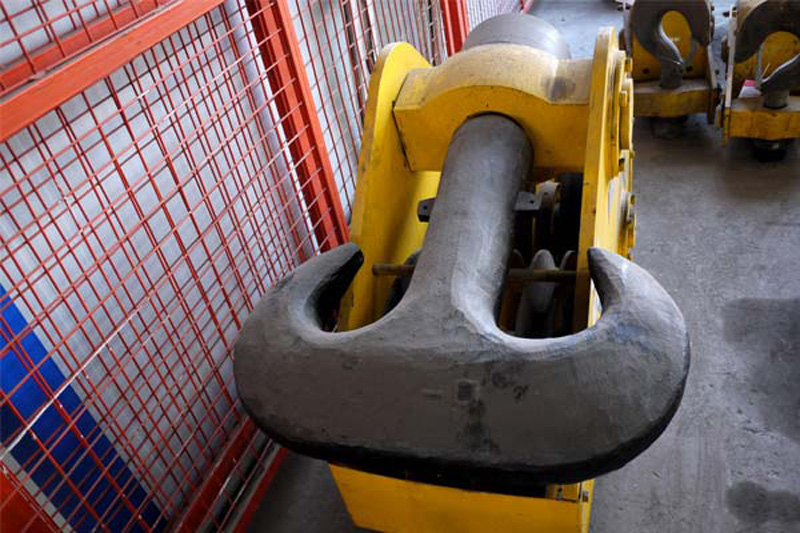Crane hooks are the critical, final link between the lifting machinery and the load. Their failure can have catastrophic consequences. While regular inspections are vital, knowing precisely when to scrap a hook is paramount for safety. Unlike a single global mandate, international standards provide the framework, often adopted or adapted by national regulations. Here’s a breakdown of key international scrapping criteria:

ISO 4309:2010 (Cranes – Wire ropes – Care, maintenance, installation, examination and discard):
Wear: The most common criterion. If wear at any point (especially the “throat” or “saddle” – the load-bearing areas) exceeds 10% of the original dimension, the crane hook must be scrapped. Measure with calipers against manufacturer specs.
Deformation: Any visible bending, twisting, or distortion from the original shape is grounds for immediate scrapping. This indicates plastic deformation and compromised strength.
Cracks: ANY crack, regardless of size or location, mandates scrapping. This includes surface cracks detected visually or via Non-Destructive Testing (NDT) like magnetic particle or dye penetrant inspection. Cracks propagate under stress.
Corrosion & Pitting: Significant corrosion that reduces cross-sectional area, or deep pitting that could act as a stress raiser initiating cracks, requires assessment. If corrosion/pitting compromises structural integrity (often judged by depth and extent relative to the 10% wear rule), the crane hook is scrapped.
Hook Opening (Wear at the Tip): Excessive wear increasing the hook throat opening beyond manufacturer limits (often referenced as a percentage increase, e.g., 15% from nominal) necessitates scrapping, as it reduces the hook’s ability to retain the load safely.
Thread Damage (For Shank Hooks): Damaged, stretched, or corroded threads on the shank where it connects to the hook block render the hook unsafe and require scrapping.
ASME B30.10 (Hooks) – Widely influential, especially in North America:
Largely aligns with ISO 4309 on core points:
Wear: > 10% reduction in height or width of the hook section.
Deformation: Any bend, twist, or increase in throat opening exceeding 15% (unless otherwise specified by manufacturer or qualified person).
Cracks: ANY crack detected.
Corrosion: Loss of more than 10% of original cross-section.
Heat Damage: Explicitly calls out scrapping if the hook shows evidence of exposure to excessive heat (discoloration – blueing/tempering colors), which alters the metallurgy and weakens the steel.

EN 13001 / LOLER (UK): European standards and the UK’s Lifting Operations and Lifting Equipment Regulations enforce strict inspection regimes. Scrapping criteria mirror ISO 4309 very closely (e.g., >10% wear, any crack, excessive deformation/corrosion). LOLER places strong emphasis on thorough examination records.
Australian Standards (AS): Follow similar principles to ISO and ASME, with wear limits typically at 10% and zero tolerance for cracks or deformation.
Manufacturer’s Specifications: Always paramount. The crane or hook manufacturer’s specific discard criteria, found in the operation and maintenance manual, override general standards if they are more stringent. They account for the specific design, material, and heat treatment of that hook.
Cracks: Any crack = Scrap it. No exceptions.
Excessive Wear: >10% reduction in critical dimensions (height/width at throat/saddle). Measure regularly!
Deformation: Any bending, twisting, or increase in throat opening beyond limits (usually 15%).
Heat Damage: Discoloration (blues, purples, straws) indicates loss of strength. Scrap.
Severe Corrosion/Pitting: When it significantly reduces cross-section or creates deep pits acting as crack starters.
Thread Damage (Shank Hooks): Compromised load path connection.
The international scrapping standard for crane hooks isn’t a single magic number, but a set of clearly defined, non-negotiable limits centered around preserving structural integrity. Wear exceeding 10%, ANY crack, ANY deformation, heat damage, and severe corrosion are universally recognized as “scrap now” conditions. These criteria, enshrined in ISO 4309, ASME B30.10, and national regulations, form the bedrock of lifting safety worldwide.


Remember:
Competent Inspection is Key: Scrapping decisions must be made by trained, competent personnel, often using specialized NDT methods.
Document Everything: Maintain meticulous inspection records tracking hook condition over time.
When in Doubt, Scrap it Out: The cost of a new hook is trivial compared to the potential cost of a failure. Safety must always be the absolute priority.
Adhering to these international scrapping standards isn’t just compliance; it’s a fundamental commitment to protecting lives, equipment, and worksites. Inspect diligently, measure precisely, and scrap decisively.
We value your feedback! Please complete the form below so that we can tailor our services to your specific needs.

Latest Comments